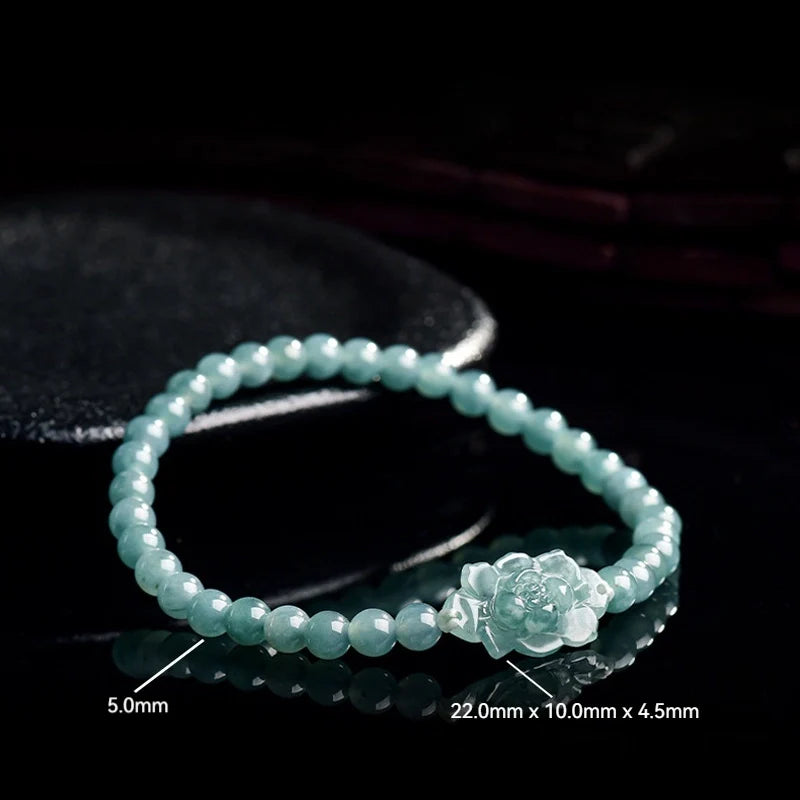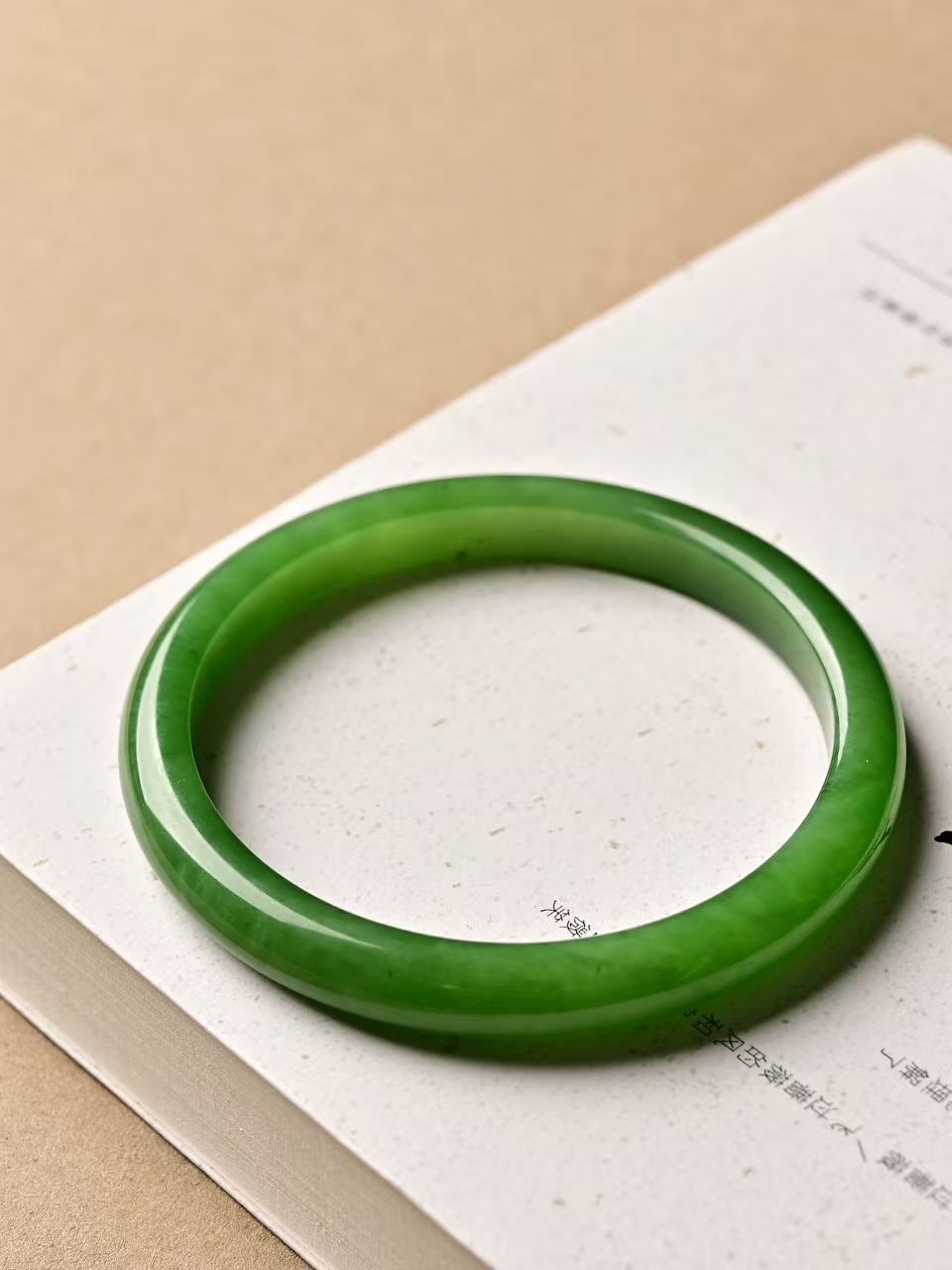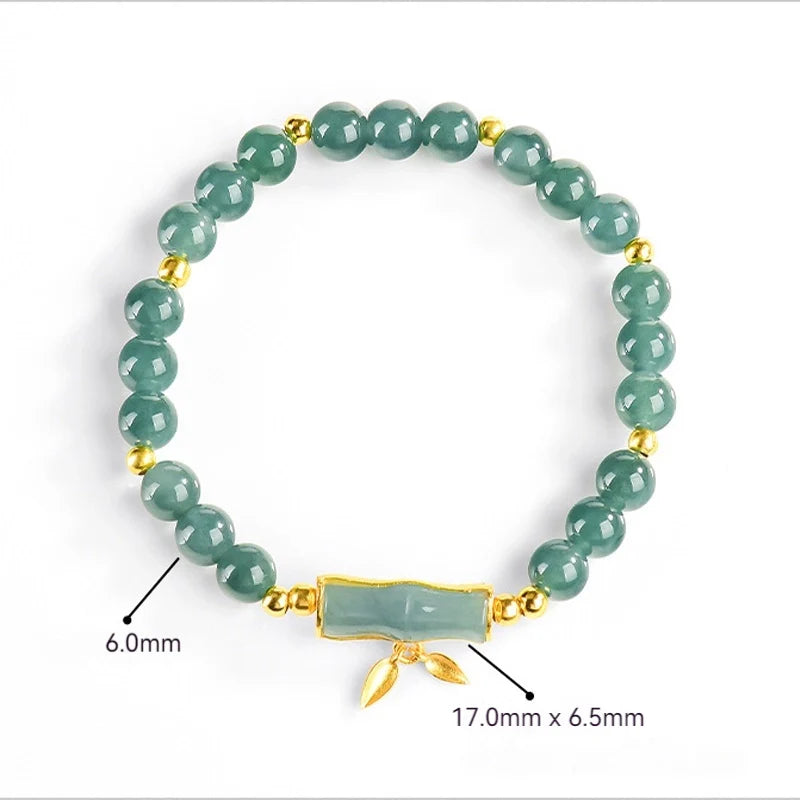How to Accurately Measure Your Wrist for a Jade Bracelet
Selecting the right jade bracelet size is crucial for both comfort and aesthetics. An ill-fitting bracelet can either slip off too easily or feel uncomfortably tight. Here’s a detailed guide to help you measure your wrist accurately and choose the perfect jade bracelet.
Understanding the Basics of Wrist Measurement
Before diving into measurement techniques, it’s essential to grasp a few fundamental concepts. The inner diameter of a jade bracelet, often referred to as the "circle size" or "inner circumference," determines how well it fits your wrist. To find the right size, you need to measure either the width or the circumference of your palm’s widest part.

Why Measure Accurately?
- Comfort: A properly sized bracelet should slide over your hand with a bit of effort but not feel too loose or tight.
- Aesthetics: The right size enhances the beauty of the bracelet on your wrist.
- Prevention of Damage: An overly tight bracelet can cause discomfort, while a loose one might slip off and break.
Three Reliable Measurement Methods
Method 1: Soft Ruler Measurement
This method is straightforward and highly accurate, making it a favorite among jewelry enthusiasts.
Steps:
- Relax Your Hand: Sit comfortably and let your hand hang naturally. Avoid tensing your muscles.
- Position Your Thumb: Move your thumb towards the base of your little finger, creating a natural "C" shape with your hand.
- Wrap the Soft Ruler: Take a soft ruler (or a piece of string) and wrap it around the widest part of your palm, just below your thumb and above your little finger.
- Record the Measurement: Note the length where the ruler overlaps. If using a string, mark the point and then measure its length with a straight ruler.
- Adjust for Fit: For a comfortable fit, add 1-2 millimeters to your measurement. This accounts for the natural give in the bracelet material and ensures it’s not too snug.
Tips:
- Measure in the afternoon when your hands are slightly swollen for the most accurate result.
- If your hands are of different sizes, measure the larger one.
- Repeat the measurement a few times to ensure consistency.
Method 2: Straight Ruler Measurement
If you don’t have a soft ruler, a straight ruler can be a handy alternative.
Steps:
- Flatten Your Hand: Place your hand flat on a table, palm down, with your fingers slightly apart.
- Identify the Widest Point: Locate the widest part of your palm, typically between your thumb and little finger.
- Measure the Width: Use the straight ruler to measure the distance across this widest point.
- Convert to Inner Diameter: Refer to a conversion chart (available online or at jewelry stores) to find the corresponding inner diameter based on your palm width.
Tips:
- Ensure the ruler is placed flat against your palm for an accurate reading.
- This method is less precise than using a soft ruler but works well in a pinch.
Method 3: String and Ruler Combination
This method combines the flexibility of a string with the precision of a ruler.
Steps:
- Cut a String: Choose a non-stretchy string or piece of paper about 30 centimeters long.
- Wrap Around Your Hand: Follow the same hand positioning as in the soft ruler method and wrap the string around the widest part of your palm.
- Mark the Overlap: Use a pen or marker to indicate where the string overlaps.
- Measure the String: Straighten the string and measure the length from the end to the marked point with a straight ruler.
- Calculate the Inner Diameter: Divide the string length by 3.14 (π) to get the approximate inner diameter of the bracelet. Add 1-2 millimeters for a comfortable fit.
Tips:
- Use a thin, non-stretchy string for the most accurate measurement.
- This method is particularly useful when you don’t have a soft ruler or need to measure discreetly.
Additional Considerations for a Perfect Fit
Hand Bone Structure
Your hand’s bone structure plays a significant role in determining the right bracelet size.
- Hard Bones: If your hand bones are relatively hard and less flexible, opt for a slightly larger size to avoid discomfort.
- Soft Bones: For those with softer, more flexible hand bones, a slightly smaller size might fit better.
Personal Preference
Everyone has their own preference when it comes to how a bracelet fits.
- Loose Fit: Some prefer a looser fit that allows the bracelet to slide slightly up and down the wrist.
- Snug Fit: Others prefer a snugger fit that stays in place more securely.
Trying It On
Whenever possible, try on the bracelet before purchasing.
- Lubrication: Apply a small amount of hand lotion or soap to your wrist to make sliding the bracelet on easier.
- Assistance: Ask a friend or family member to help you put on the bracelet if you’re having trouble.
- Comfort Check: Ensure the bracelet slides over your hand with a bit of effort but doesn’t feel too tight or loose.






